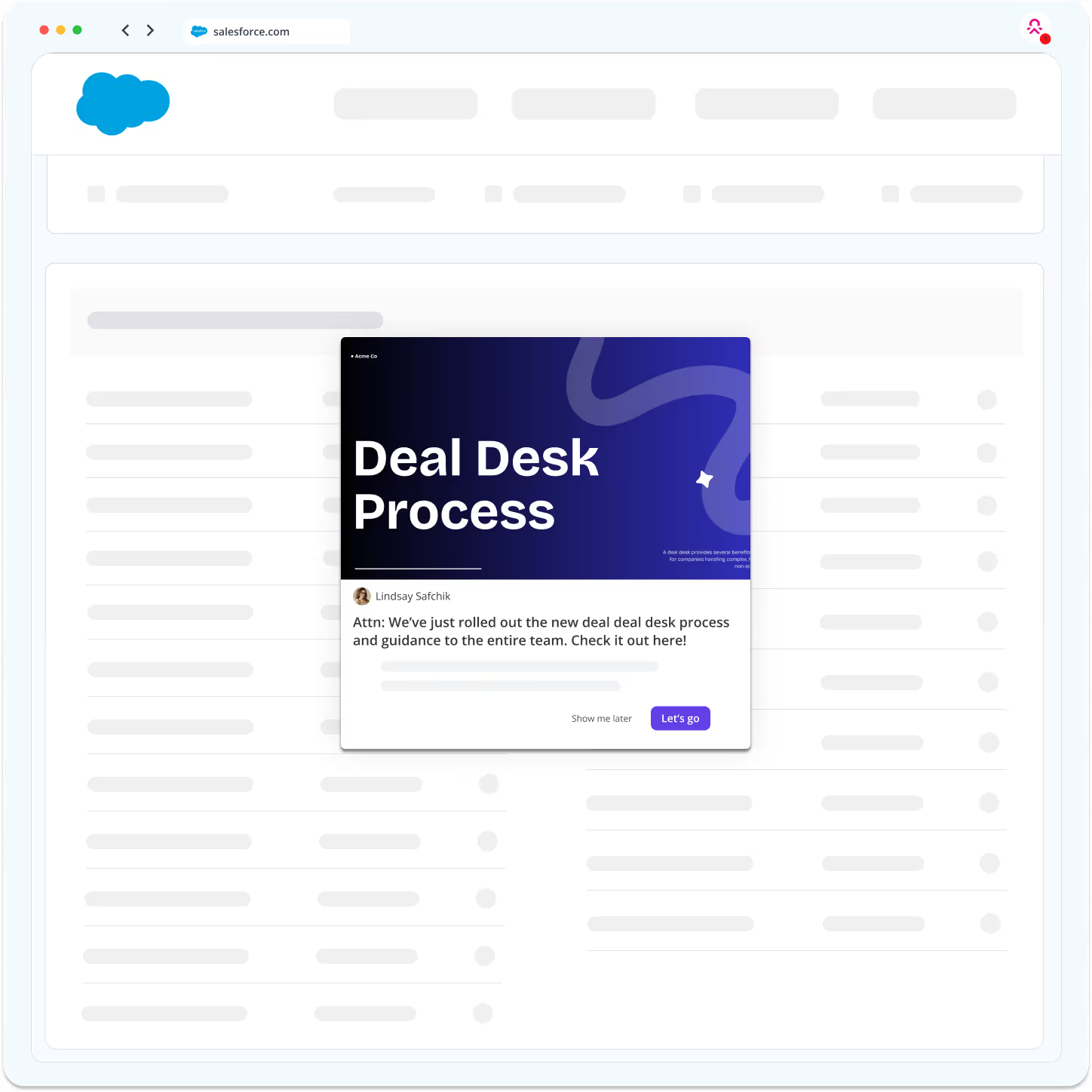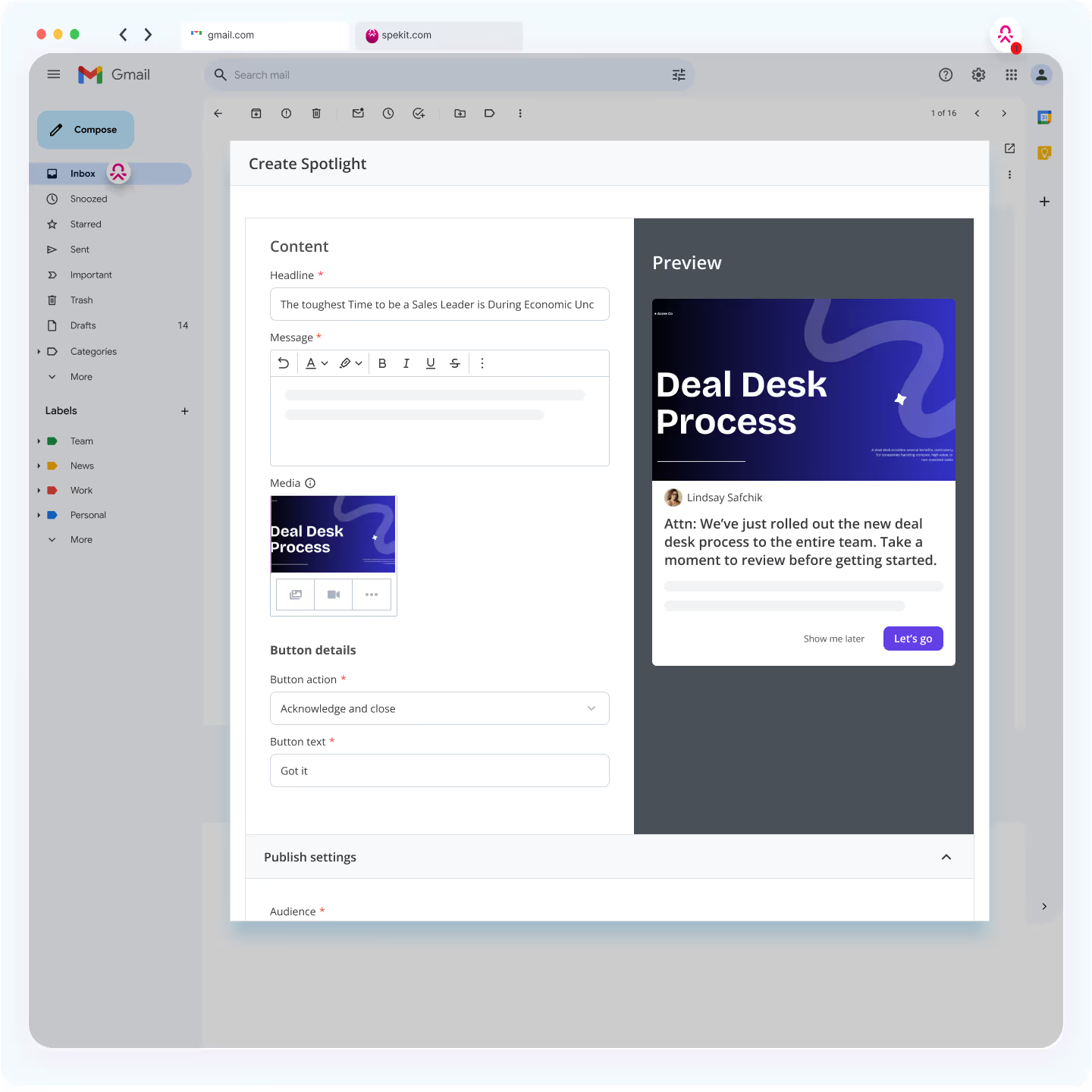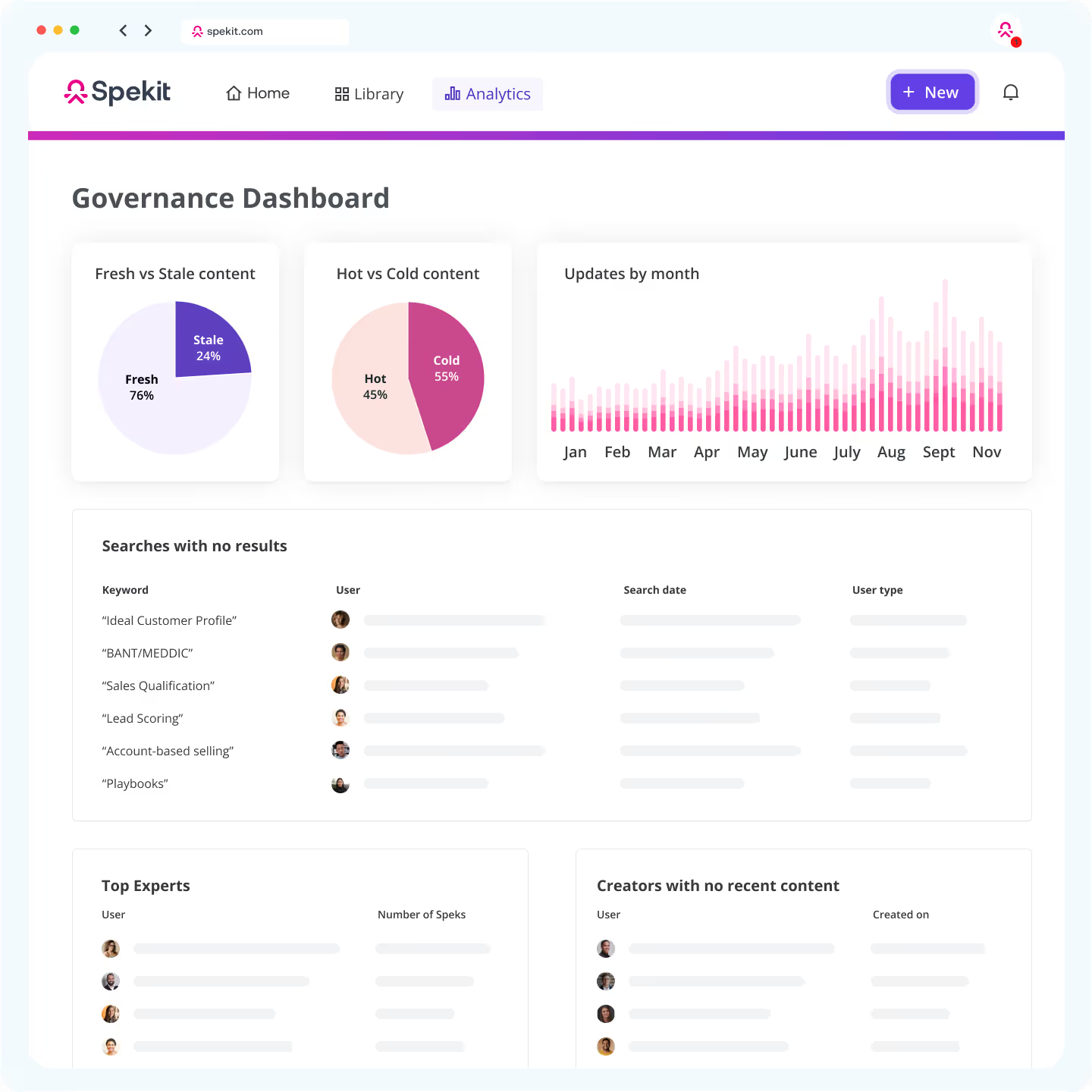Communicate changes & updates with
in-app alerts


Communicate changes in real-time
Implementing a new tool? Rolling out revised processes? Trying to get eyes on a new piece of sales content? Spotlights communicate updates directly in the flow of work so reps are never out of the loop.
- Bullet List Item
- Bullet List Item
- Bullet List Item

Enable sales reps with new content and resources
Make sure reps are always using the newest case studies and collateral. Notify them in real-time when you've launched new guides, playbooks, case studies, or objection-handling scripts to help them sell better, faster.

Make notifications available for as long as they’re needed
Set Spotlights to appear indefinitely to support evergreen needs, like sharing resources with a new sales rep when they use a tool for the first time. For time-bound updates, like reminding employees to complete compliance training by the deadline, set an expiration date for the Spotlight.

Measure engagement with notifications
See who’s viewing or snoozing announcements with real-time analytics. Spotlight analytics reveal views and engagement, and so you can put an end to the question “Is anyone reading this?”






